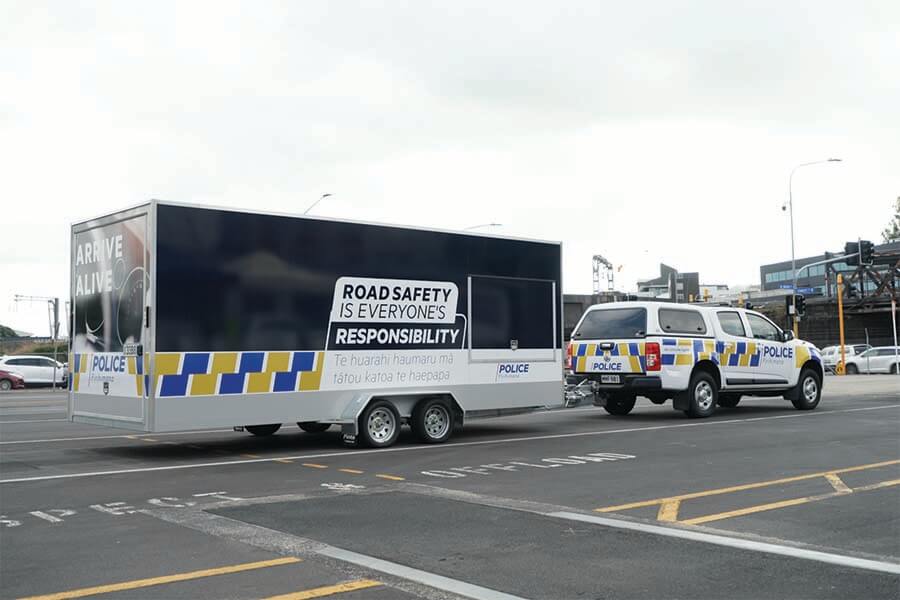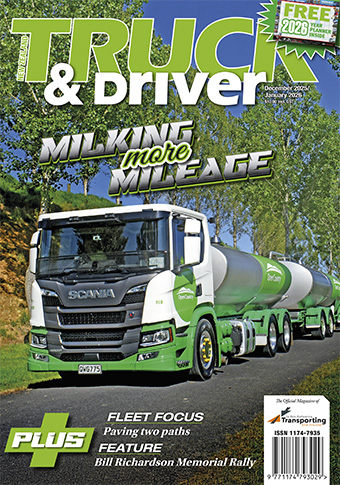Aeolus Truck & Driver News


Mobile brake testing still delayed
Aeolus Truck & Driver News
The new Mobile Roller Brake Test units for the Police Commercial Vehicle Safety Team still haven’t been put into service, almost two years down the road from a media launch event in February 2022.
The new MRBT machines, billed as a key component of the previous government’s “Road to Zero” road safety campaign, were designed to be moved around the country by CVST team members in specially designed trailers towed by utes.
New Zealand Truck & Driver attended the 2022 launch and reported on the non-deployment of the machines in the December 2022-January 2023 magazine. At that time police confirmed the five completed units were in storage at the CVST base in Stanley St, Auckland with the sixth still to be completed.
We checked again for any progress at the end of last year and received the following reply via the Police media team.
...The new Mobile Roller Brake Test units for the Police Commercial Vehicle Safety Team still haven’t been put into service, almost two years down the road from a media launch event in February 2022.
The new MRBT machines, billed as a key component of the previous government’s “Road to Zero” road safety campaign, were designed to be moved around the country by CVST team members in specially designed trailers towed by utes.
New Zealand Truck & Driver attended the 2022 launch and reported on the non-deployment of the machines in the December 2022-January 2023 magazine. At that time police confirmed the five completed units were in storage at the CVST base in Stanley St, Auckland with the sixth still to be completed.
We checked again for any progress at the end of last year and received the following reply via the Police media team.
“Testing and development continues on the new Mobile Roller Brake Testing units,” says Inspector Mike Brooklands, National Manager, Commercial Vehicle Safety Team.
“There’s no set timeframe for completing the testing, Police are working to ensure the new technology is fit-for-purpose before it’s deployed in a mobile operational setting.
“Police operate in a high integrity environment and want to ensure that all aspects are covered in relation to Health and Safety prior to deployment in a mobile operational setting, including appropriate driver training for transportation of these trailers.
“Police remains committed to improving road safety and reducing the risk of a serious injury or death on our roads, including as a result of a heavy vehicle brake failure.”
That reply was out of context with the late-2022 response when another Police spokesperson said the delay was the result of a defect they had detected in the design of the trailers that were to transport the MRBT machines.
We then asked if the trailer issue had been resolved and received a follow-up statement saying: “Resolving safety issues with the trailer remains a focus before the Mobile Roller Brake Testing units can be deployed in a mobile operational setting.”
Police planned to have six of the MRBT units deployed regionally around the country during 2022 to carry out random checking of heavy vehicle braking systems nationwide. The mobile units were to supplement the permanent roadside facilities in the Bay of Plenty and in North Canterbury.
CVST had placed a priority of increased brake testing after identifying a 67% failure rate for vehicles tested at its Paengaroa site in the Bay of Plenty between 2018 and 2021.
The CVST opened tenders for the supply of six new machines in 2020. The tender requirement was for a roadside brake tester that had the capacity to test fully laden vehicles. It needed to be in a self-contained trailer with a generator and an overall weight around 3000kg.
Police selected the BM Autoteknik BM20200 system from Denmark capable of testing cars, vans, four-wheel-drives and heavy vehicles to a COF-B standard.
Another requirement was for the MRBT system to be set up using just two people and be ready for operation within 15 to 20 minutes of arrival at a site.



 + EQUIPMENT GUIDE - FREE
+ EQUIPMENT GUIDE - FREE
